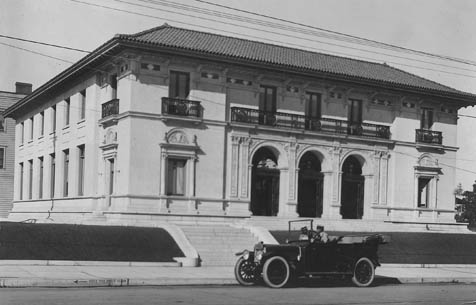Question: How old is the Santa Barbara Museum of Art? -Arlene Kupchella

Santa Barbara already enjoyed a reputation as the most significant art colony between San Francisco and Los Angeles when the new S.B. Museum of Art opened in late spring 1941, an event that would only enhance this reputation.
By the mid 1930s, Santa Barbara was outgrowing its main post office at 1130 State Street. Proposals by the federal government to add on to the building were met by fierce public outcries, primarily regarding the design of the addition. Under the leadership of Santa Barbara News-Press publisher and former local postmaster, Thomas Storke, the city negotiated for a new post office at 836 Anacapa Street. This facility, which still serves the city today, was dedicated in May 1937.
In July of that year, Colin Campbell Cooper, one of the renowned artists who called Santa Barbara home, wrote a letter to the News-Press suggesting the old post office be converted into an art museum. At that time, despite Santa Barbara’s artistic reputation, there was precious little gallery space in the city, the public library’s Faulkner Memorial Gallery being the only space of any significant size. Cooper’s suggestion met with an enthusiastic response. Storke and county supervisors C. L. Preisker and Sam Stanwood took the lead in negotiating with the federal government for the county to buy the property for $60,000, a bargain-basement price. The county would then turn over the site to a group to open an art museum.
In December 1939, the Santa Barbara Museum of Art organized as a nonprofit corporation, with Buell Hammett as president. The stepson of Ernest Lawrence Thayer, author of Casey at the Bat, Hammett was an avid art collector. Joining him as officers were community benefactor Katherine McCormick, artist DeWitt Parshall, and artist/collector Wright Ludington. David Adler from Chicago and Chester Carjola of Santa Barbara were the architects hired to give the building a more Hispanic exterior and to remodel the interior. Much of the remodeling cost was defrayed by patrons who funded individual galleries in memory of family or friends. The McCormicks, Ludington, and the Hammetts all funded galleries.
In January 1940, Donald Bear, former director of the Denver Art Museum, became the first director of the Santa Barbara Museum of Art. Bear envisioned an institution that would be at the very center of the community’s cultural life, welcoming all who wished to participate. This was reflected in the dues charged to become an associate member of the museum: a maximum of five dollars, a minimum of one cent. One of Bear’s highest priorities was the establishment of a solid education program; the first official visitors to the museum were 1,500 area school children. Bear also wanted to establish the museum as a showcase of Santa Barbara artists’ work.
The museum opened to the children precisely at 11:43 a.m. on June 5, 1941, since Hammett had an astrologer calculate the most propitious time for the museum’s unveiling. The inaugural show, Painting Today and Yesterday in the United States, was made up entirely of loaned pieces since at that time the museum owned only 65 works. By the close of business on the evening of the 5th, more than 5,000 people had come through the doors and, by the end of the first year of operation, more than 75,000 had strolled the galleries. It was an auspicious beginning.



